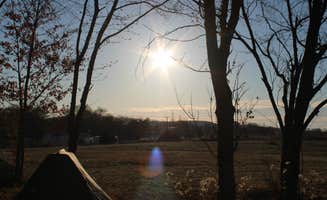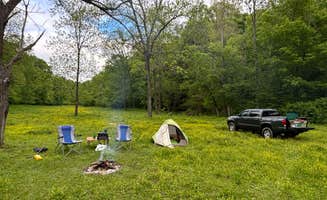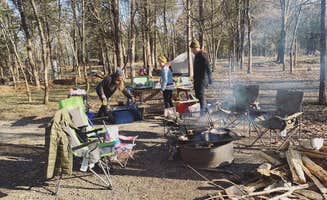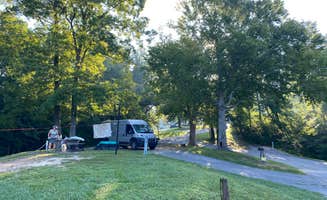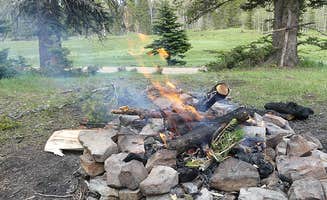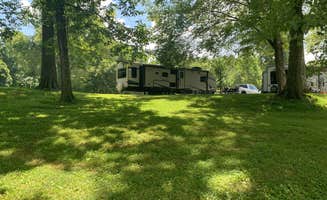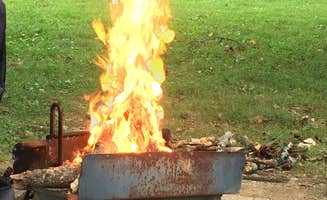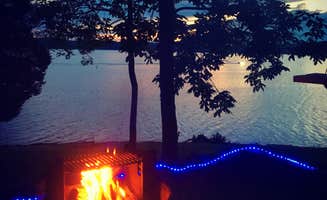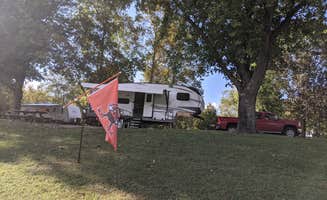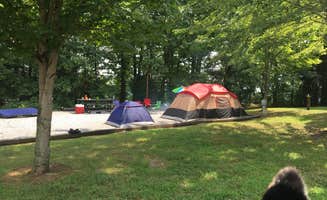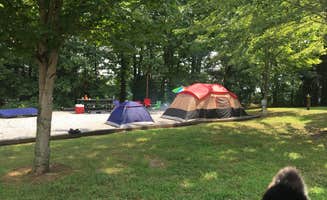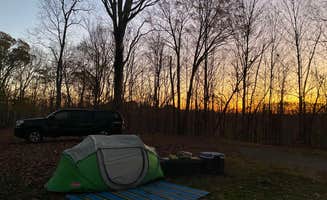Camping sites near Westmoreland, Tennessee range from lakeside spots to forested retreats, with elevations averaging 500-800 feet above sea level. The region experiences hot, humid summers with temperatures regularly reaching the 90s and mild winters where occasional freezing occurs. Most campgrounds have significant tree cover, creating natural shade during summer camping season.
What to do
Wildlife observation opportunities: Bledsoe Creek State Park Campground offers excellent conditions for viewing local fauna. "This park was my home for a week or so and it was so amazing to enjoy. Deer would just walk up near you and just say hello," reports Grace E. Visitors should be aware that the wildlife proximity comes with challenges: "Our dogs picked up ticks every day, and we had a few as well. Watch out for lyme and other tick born illnesses," notes Kyle S.
Lakefront activities: Cedar Creek Campground provides water access with a swimming beach adjacent to campsites. "Sites are very well-maintained with mix of shade and sun. Nice coated metal mesh large picnic table and fire ring. Sites closer to the waterfront are beautiful and more spread out than the inland sites," writes Jay B. The swimming area is within walking distance of most sites and has sandy sections suitable for children.
Hiking trails: Multiple difficulty levels exist across the campgrounds. The Bearwaller Gap Trail near Defeated Creek offers a 6-mile one-way route with moderate to strenuous sections. For easier options, Bledsoe Creek has more gentle pathways. "Beautiful hiking on calm trails and lots of wildlife! And fishing!" mentions Abby C. Trail maps are available at visitor centers or camp stores in most locations.
What campers like
Clean facilities: Defeated Creek Campground consistently receives positive reviews for maintenance. "Bathhouses are clean but could use shivering updating. Very close stores and a boat rental and restaurant at the beginning of the park. Super nice staff and all around clean area," notes Chris W. The bathhouses include hot water and are cleaned daily according to multiple reviewers.
Spacious sites: Many campgrounds offer well-separated spaces. "Mostly flat campground with great water views about everywhere. Private beach access and some playground areas," says Chris W. about Defeated Creek Campground. Site dimensions vary by location, with waterfront sites typically offering more room than interior sites at most campgrounds.
Wooded surroundings: Cedars of Lebanon State Park Campground features distinctive cedar forests. "The wooded area and cedar pines reminded me of camping back in Minnesota. The grey brickwork picnic shelters and campground atmosphere gave it a rustic feel however did not spare any amenities," writes Leasa W. The cedar environment creates a unique camping atmosphere with natural fragrance throughout the park.
What you should know
Reservation requirements: Most campgrounds fill quickly during peak season (May-September). "Very hard to get into," notes Jennifer R. about Defeated Creek Campground. Reservations should be made 2-3 months in advance for weekend stays during summer months.
Limited connectivity: Cell service varies significantly between locations. "If you plan to go hiking on the trails that are surrounding the area please know that there heavily wooded areas with ticks, we found out the hard way," warns a camper at Defeated Creek. At Beaver Creek Campground, the atmosphere is "very peaceful with no one being there when we had went," according to Ethan S.
Seasonal closures: Operating dates differ between campgrounds. Cedar Creek operates from April 16 to October 12, while others like Cedars of Lebanon remain open year-round. Weather conditions may affect accessibility, particularly after heavy rains when some areas become muddy or flooded.
Tips for camping with families
Playground access: Several campgrounds feature play areas for children. "The kids ride bikes and fish. We always get sites on the water," notes Holly G. about her family's experience at Defeated Creek Campground. Playground equipment typically includes swings and climbing structures suitable for ages 3-12.
Educational opportunities: Mammoth Cave Campground offers unique learning experiences within driving distance. "People here were kind and trustworthy. People were charging their power stations unattended in the bathrooms. We were given extra wood by our neighbors," mentions Veronica S. The area features "fireflies at night. Frogs are singing in the evening. Tons of trees and shade."
Safety considerations: Parents should monitor children near water. Many campgrounds have designated swimming areas, but not all water access points are supervised. "We loved our stay at Bledsoe Creek but unfortunately it was closed due to all the rain and high waters," one family reported, indicating weather conditions can impact water activities.
Tips from RVers
Site selection strategies: At Cedar Creek, "the sites are close together but not so close that you feel like the neighbors are looking in your windows," notes one RVer. Sites with numbers 1-6 receive full sun, while remaining sites have partial to full shade. Pull-through sites are recommended for larger rigs at many locations.
Hookup availability: For full-service camping, look to specific campgrounds. "Our site was right beside the shower house. It was a pull through site, but it was a little tight. To my surprise I opened the electric pedestal, and there was only 50 amp service," writes Gregory G. about Cedars of Lebanon. Some campgrounds offer only 30-amp service, requiring adapters for RVs with 50-amp systems.
Leveling challenges: Some campgrounds have uneven terrain. "The site was not level and the water was on the opposite side of our camper (more annoying than anything)," notes Tiffany D. RVers should bring leveling blocks, especially for the older campgrounds where maintenance may be less consistent.


